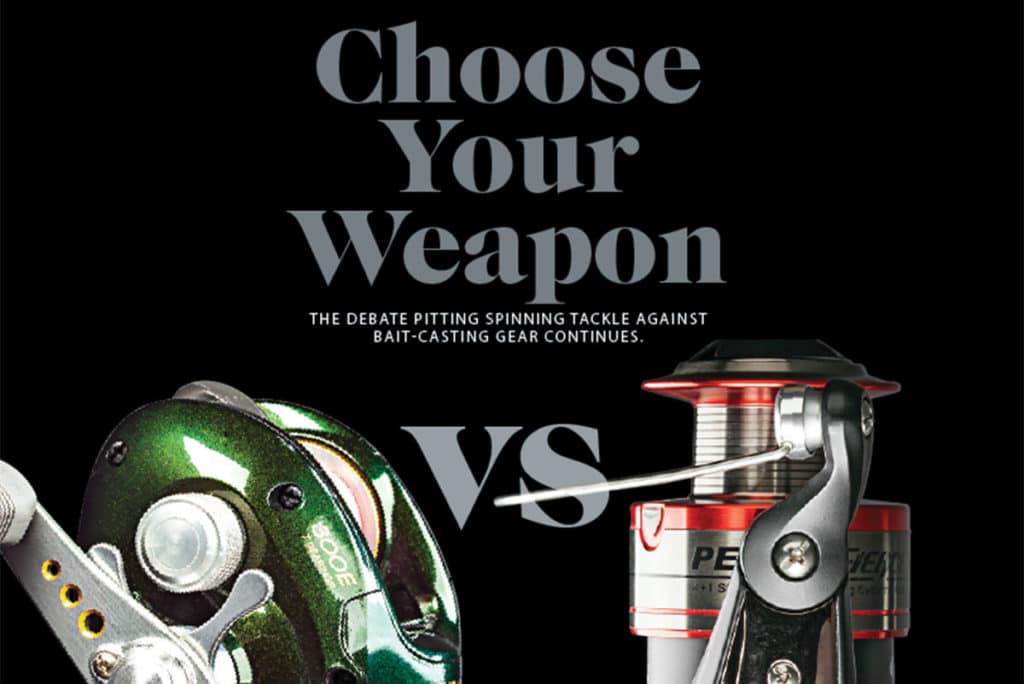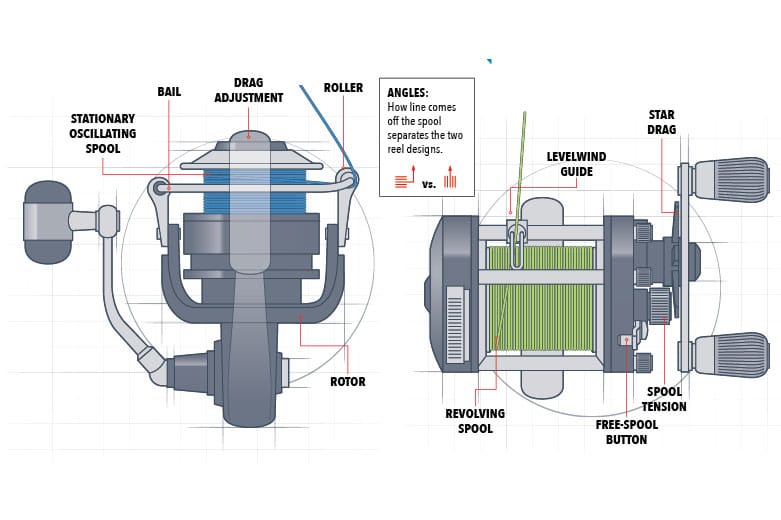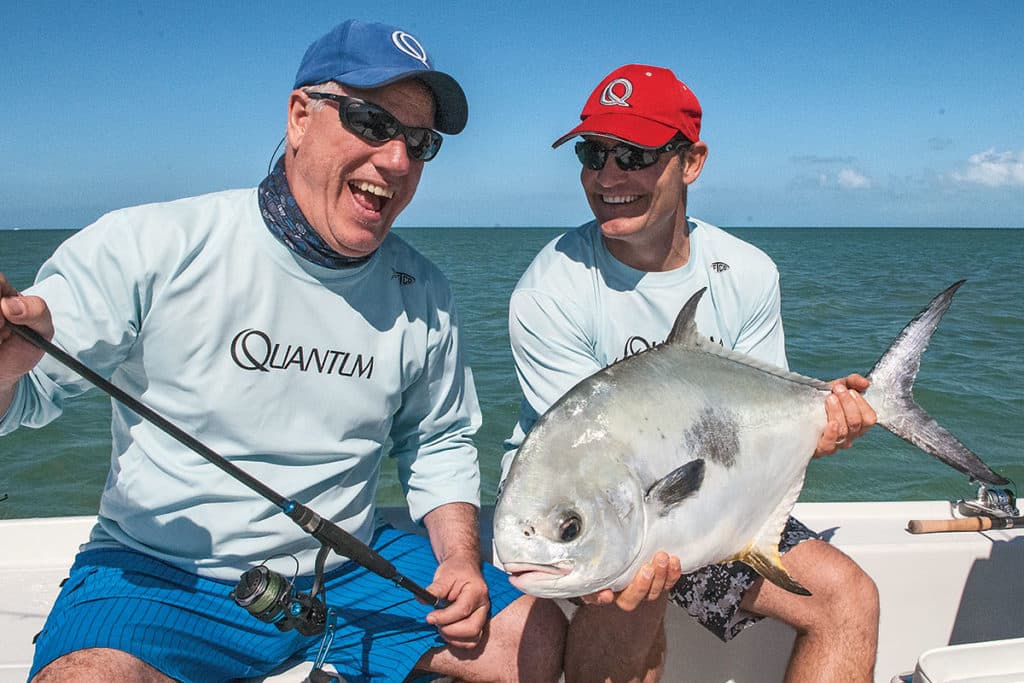
If you rule out fly-fishing, all light-tackle saltwater anglers fall into one of two distinct camps: You’re either a spinning-reel fan or a bait-caster fan. I suppose some crossover exists, but I’ll bet it’s a small number. For the most part, we are one or the other.
The two designs work in profoundly different ways. Bait-casting reels utilize a revolving spool that turns among multiplying gears. Line flows straight on and off the spool through a levelwind mechanism. Baitcasters have been around since the 19th century, but later versions were scaled down from successful conventional trolling reels and designed specifically for casting, particularly surf-casting. Penn introduced the Model F around 1933, and it quickly became known for its ruggedness and reliability in the surf. Spinning reels rocketed after the 1948 introduction of the venerable Mitchell 300, a reel that changed fishing forever and created a huge post-war industry that continues to this day. Tackle engineers created spinners to solve the problems associated with baitcasters — namely, their tendency to backlash and create the dreaded “bird’s nest.”

Different Designs
Spinners use a fixed-spool design in which the line gets wrapped around the spool in coils, coming on and off at a 90-degree angle through a roller. A few spinning reels have used only a roller, but the vast majority use a roller combined with a bail wire mechanism. The bail and the roller rotate, or “spin,” when the handle turns, and the spool moves up and down to assure a level wind.
Bait-caster advocates argue that spinning reels are, by nature, inefficient and cumbersome, due to that seemingly awkward method of paying out and retrieving line in coils. They much prefer the simplicity of a direct connection between the lure (or bait) and the reel spool. And it’s true that spinning reels by their nature tend to create line twist, especially when an inexperienced angler attempts to reel against the drag.
Yet spinning gear remains the most popular type of saltwater reel by a substantial margin. The perceived benefits of the tackle outweigh the perceived detriments in the eyes of the majority of the tackle-buying public and experienced anglers. Spinning reels really are much easier to cast. Rather than learn to master baitcasters, most of us have taken the path of least resistance.

Regional Favorites
Bait-casting gear enjoys regional strongholds, however — most notably in the state of Texas, where many shallow-water waders wouldn’t be caught dead tossing a lure to a redfish or trout with a spinning reel. Many of the hardcore surf fishermen in New England and North Carolina share a similar view; the revolving-spool reel remains their go-to gear. Modern bait-casting reels have evolved immensely, with many innovations designed to help prevent backlashes. These include adjustable magnetic tensioners to raise and lower resistance when the spool turns during the cast. Too much resistance and your distance suffers; too little and you risk a bird’s nest. Of course, thumb pressure remains the most reliable way to apply resistance when casting, and that’s the skill that many anglers find difficult to master.
Dealing with Tension
With bait-casting reels, you often need to readjust the tension on the spool every time you change the weight of the lure or bait you’re throwing. It’s really a simple adjustment, and those who’ve mastered the tackle often eschew all tension-applying devices except for the thumb. Spinning reels demand more attention to things like line twist, and they often need more maintenance because they have a lot of moving parts. But modern spinners have drag systems that are much more robust and sophisticated than earlier versions from even a decade ago. Bait-casting reels evolved from conventional trolling reels and might therefore be considered a “heavier” gear than spinners. In reality, the tackle industry has moved in the other direction, shrinking bait casters and beefing up spinning reels.
Next-Generation Gear
The proliferation of braided line spurred the development of all-new spinning gear, which went far beyond the light-tackle nature of traditional spinners. The creation of heavy-duty reels like the Shimano Stella, the Penn Torque and Daiwa Saltiga opened up new options for offshore fishermen. Suddenly, you could target truly large fish with spinning gear and reliably apply as much as 60 pounds of drag pressure. Until only a few years ago, no tackle outside of conventional trolling gear could make that claim, and it didn’t cast worth a darn. As in most aspects of life, it comes down to personal choice. You can embrace the simplicity and reliability of the bait-casting reel (start practicing with that thumb), or you can join the masses and be part of the spinning-reel revolution. Either way, the tackle you’ll find on the market in both segments is better than it’s ever been, so you really can’t go wrong.









